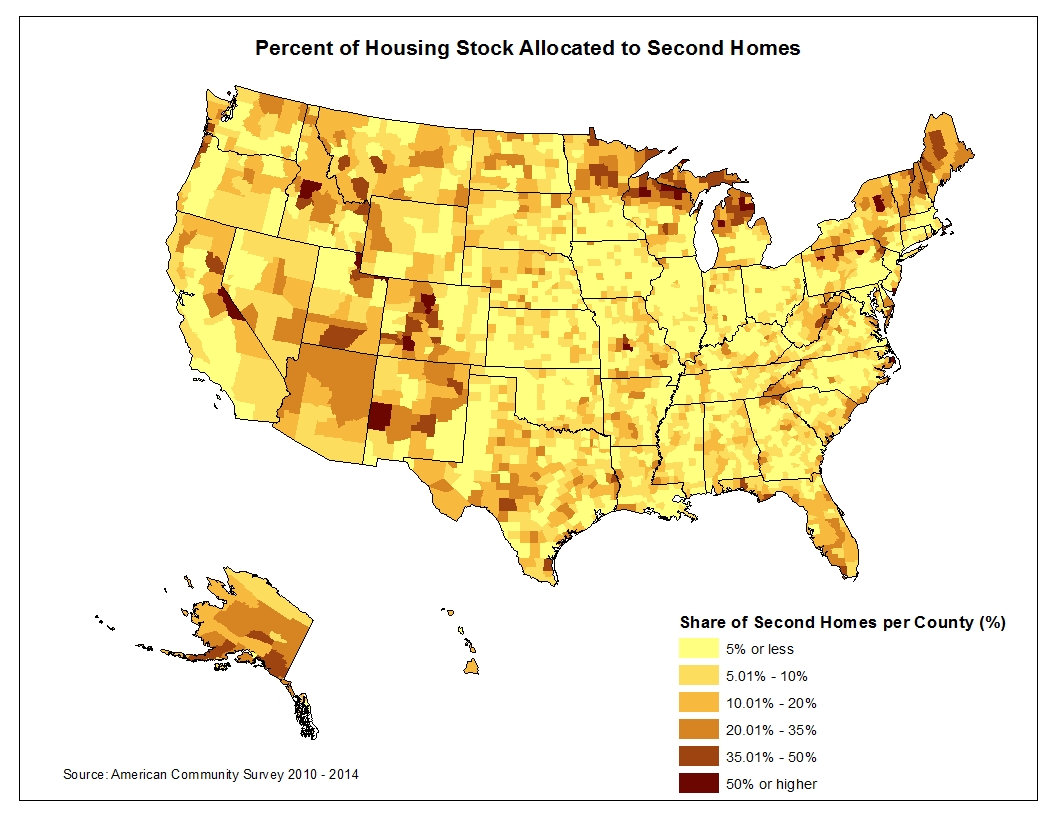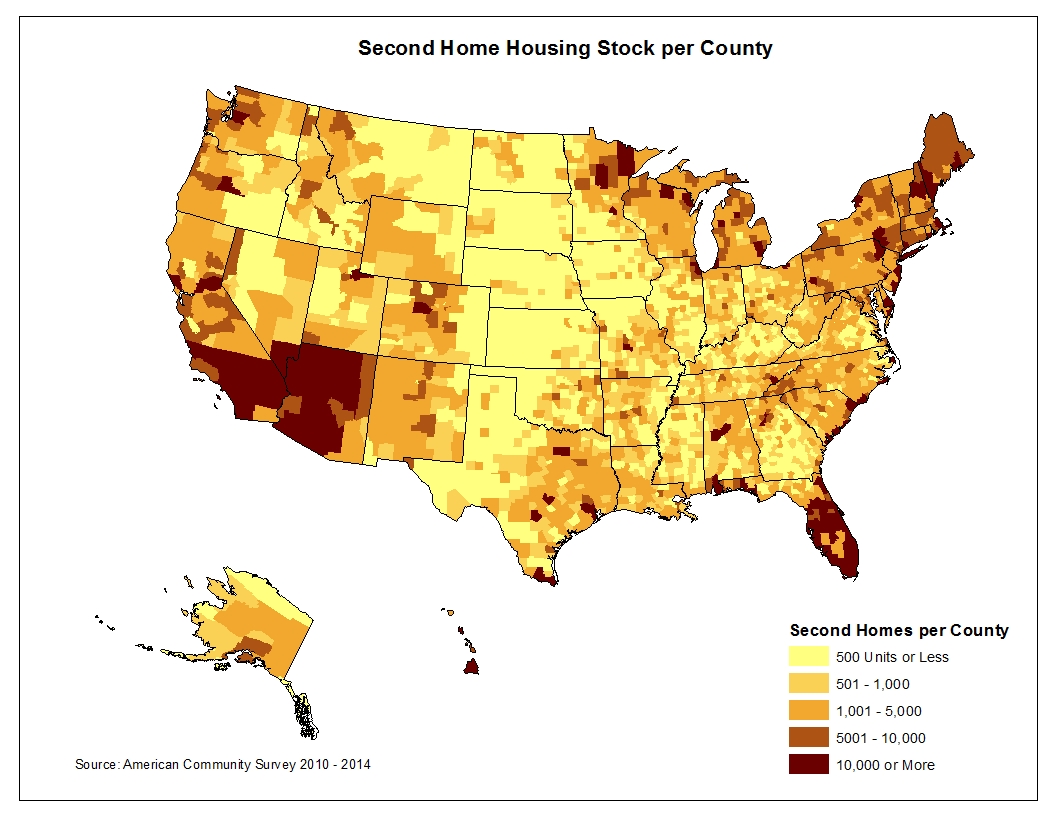The number of second homes in the U.S. has increased by more than a half million in the five years following the recession. Using 2014 data, the National Association of Home Builders (NAHB) has looked at the supply of second homes within the housing stock. According to NAHB's Na Zhao who produced the report, it is important to understand the pattern of these homes because they could have a significant economic impact on local housing markets and thus important policy implications.
According to NAHB estimates there were 7.5 million homes that met their definition of second homes. The last time NAHB looked at the second home stock in 2009 there were 6.9 million such properties. Their share of the total housing stock increased over that period from 5.4 percent to 5.6 percent.
On a percentage basis the largest share of second homes in the county is in Hamilton County, New York at 79.3 percent followed by Forest County, Pennsylvania at 74.0 percent and Rich County, Utah at 72.7 percent. Rounding out the top five were Alpine County, California and Daggett County, also in Utah.

Zhao says, as one might expect, the top 10 counties with the largest share of second homes are mostly tourist destinations. They are also places where hardly anyone actually lives.
Hamilton County for example is the least populous County is New York State. Located in the north central portion of the state its boundaries fall totally within the borders of Adirondack State Park and development within the park is severely restricted. Forest County and Rich County are each the 3rd least populous counties in their respective states, Rich County in fact had a 2014 population of only 2,293 people. Both counties do have a significant tourist or recreational base; the Alleghany National Forest covers part of Forest County and Rich County houses Bear Lake, about the only large body of water in the area.
In terms of sheer numbers of second homes, the leader is Maricopa County Arizona with 118,282 properties, followed by four Florida counties, Palm Beach, Lee, Broward, and Miami-Dade. Two more Florida counties and two in California were also in the top ten along with Barnstable County, Massachusetts on Cape Cod.

Zhao says that the concentration of second homes is not simply restricted to conventional locations like ocean or lake properties. There were 913 counties spread over 49 states (Connecticut and Washington, DC being the lone exceptions) where second homes accounted for at least 10 percent of the housing stock. In 357 counties, 11 percent of the total, more than 20 percent of houses were second homes and in 27 counties in 14 states the percentage was over 50 percent.
NAHB defined second homes as those qualified for the home mortgage interest deduction using the Census Bureau's 2014 American Community Survey (ACS). That definition includes a non-rental property that is not classified as taxpayer's principal residence.







